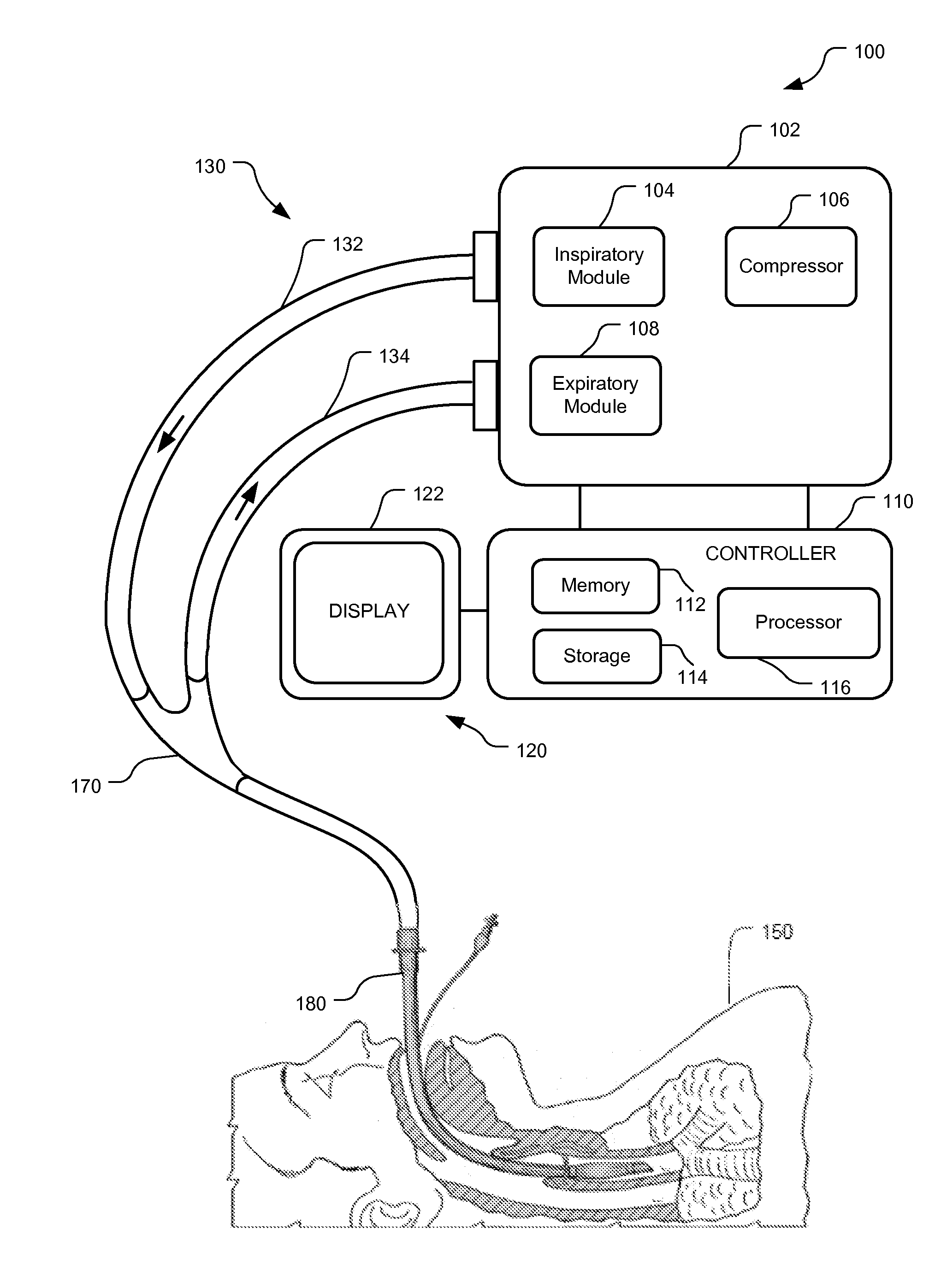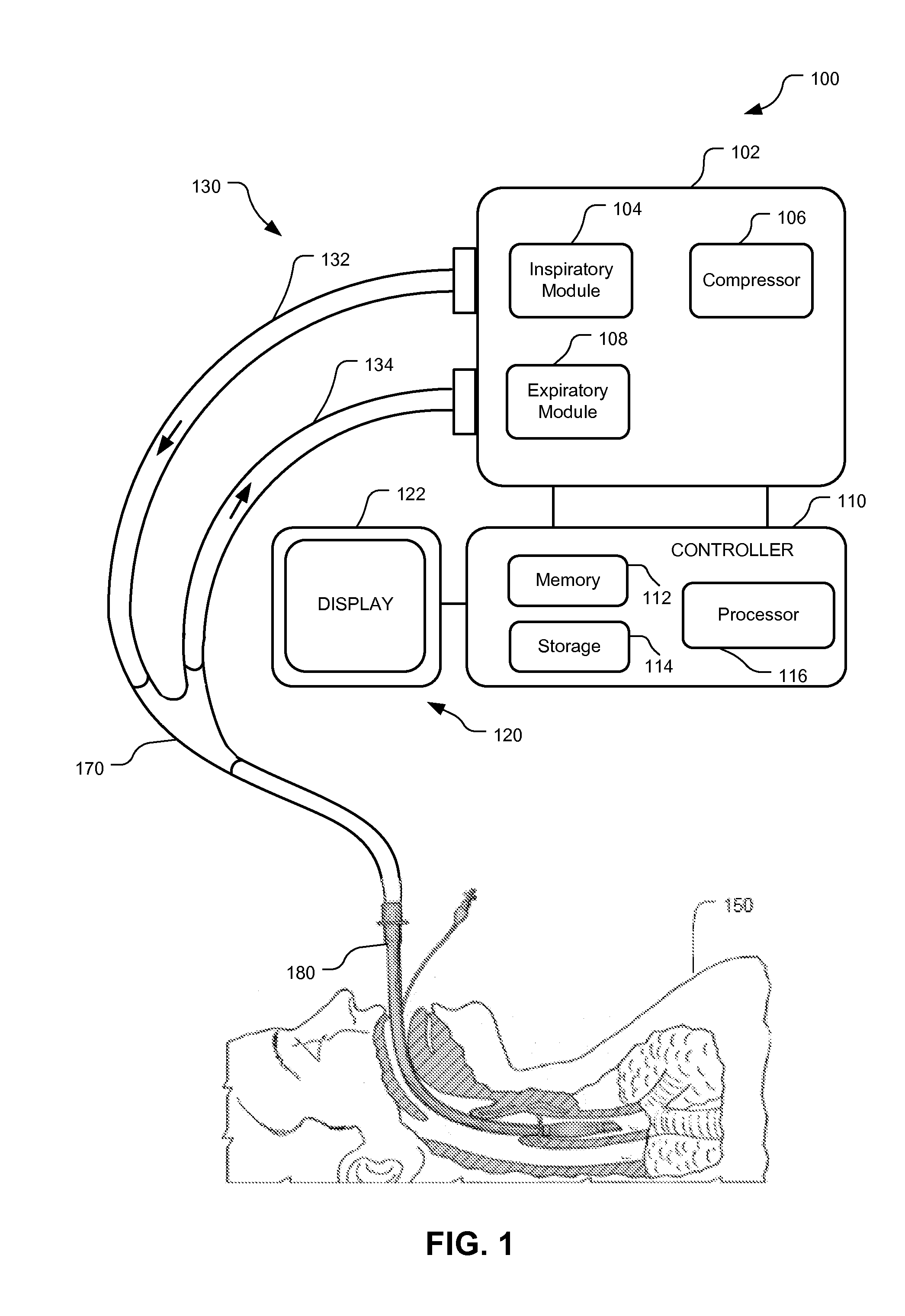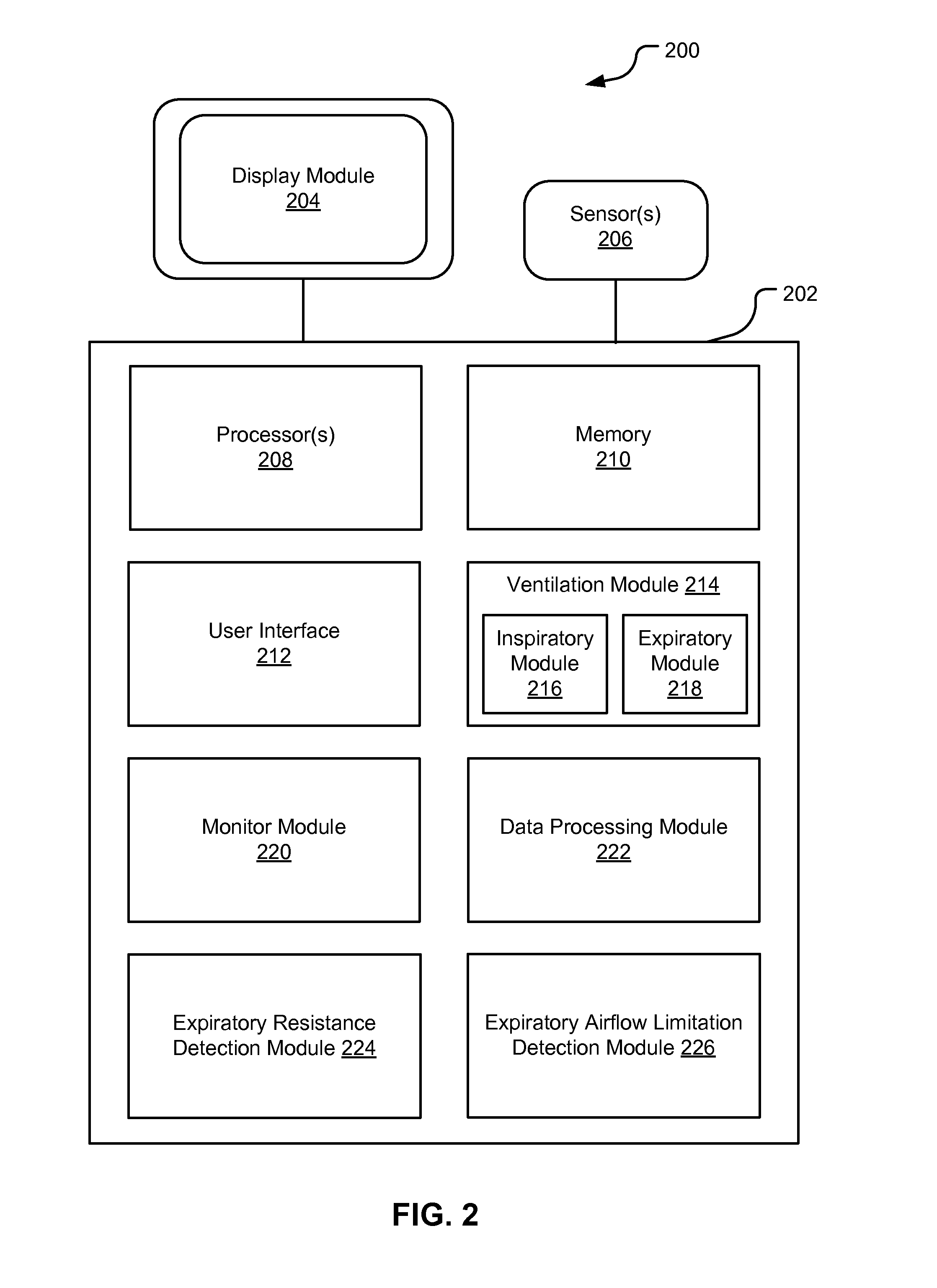Detection of expiratory airflow limitation in ventilated patient
a technology for ventilated patients and expiratory airflow, which is applied in the field of detection of expiratory airflow limitation in ventilated patients, can solve the problems of increasing complexity of modern ventilatory equipmen
- Summary
- Abstract
- Description
- Claims
- Application Information
AI Technical Summary
Benefits of technology
Problems solved by technology
Method used
Image
Examples
Embodiment Construction
[0021]Although the techniques introduced above and discussed in detail below may be implemented for a variety of medical devices, the present disclosure will discuss the implementation of these techniques for use in a mechanical ventilator system. The reader will understand that the technology described in the context of a ventilator system could be adapted for use with other therapeutic equipment.
[0022]According to embodiments, a ventilator may be configured to detect expiratory airflow limitation in a ventilated patient. For example, the ventilator may detect expiratory airflow limitation in a ventilated patient based on evaluating, inter alia, ventilatory data (e.g., flow, volume, pressure, compliance, ventilator setup data, etc.), patient data (e.g., a patient body weight, a patient diagnosis, a patient gender, a patient age, etc.), and / or any suitable protocol, equation, etc. Specifically, based on the ventilatory data, the ventilator may calculate expiratory resistance, e.g., ...
PUM
 Login to View More
Login to View More Abstract
Description
Claims
Application Information
 Login to View More
Login to View More - R&D
- Intellectual Property
- Life Sciences
- Materials
- Tech Scout
- Unparalleled Data Quality
- Higher Quality Content
- 60% Fewer Hallucinations
Browse by: Latest US Patents, China's latest patents, Technical Efficacy Thesaurus, Application Domain, Technology Topic, Popular Technical Reports.
© 2025 PatSnap. All rights reserved.Legal|Privacy policy|Modern Slavery Act Transparency Statement|Sitemap|About US| Contact US: help@patsnap.com



